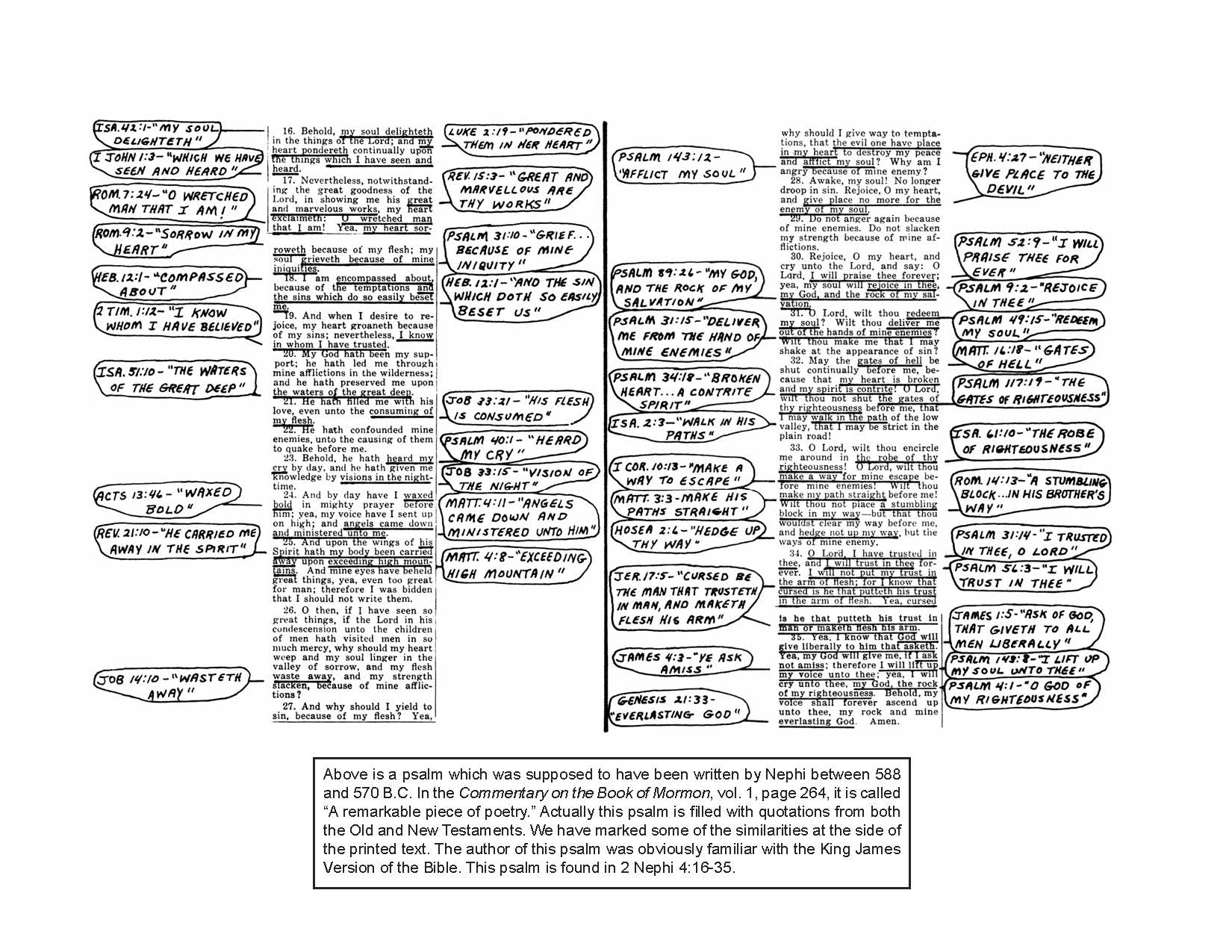One of the challenging issues that believers in the Book of Mormon as an authentic historical text face is the existence of extensive quotations, allusions, and references to New Testament texts throughout the book. The existence of these references is problematic because the New Testament was either not yet written or was not accessible to the Book of Mormon’s alleged authors.
The existence of this New Testament language is often explained away as an artifact of the translation process. Allegedly Joseph Smith drew on the New Testament to inspired the language of his translation. And there are definitely certain things that can be explained by this theory.
But what word choice by a translator cannot explain are places where the Book of Mormon authors clearly seem to be drawing directly on the New Testament text and even expanding on it.
One of the most obvious examples of this is Moroni 10:8-17 which plainly draws on and builds upon 1 Corinthians 12:4-11 in unmistakeable ways
| Moroni 10:8-17 | I Corinthians 12:4-11 |
| 10:8 And again, I exhort you, my brethren, that ye deny not the gifts of God, for they are many; and they come from the same God. And there are different ways that these gifts are administered; but it is the same God who worketh all in all; and they are given by the manifestations of the Spirit of God unto men, to profit them. | 12:4 Now there are diversities of gifts, but the same Spirit. 5 And there are differences of administrations, but the same Lord. 6 And there are diversities of operations, but it is the same God which worketh all in all. 7 But the manifestation of the Spirit is given to every man to profit withal. |
| 10:9 For behold, to one is given by the Spirit of God, that he may teach the word of wisdom; 10 And to another, that he may teach the word of knowledge by the same Spirit; | 12:8 For to one is given by the Spirit the word of wisdom; to another the word of knowledge by the same Spirit; |
| 10:11 And to another, exceedingly great faith; and to another, the gifts of healing by the same Spirit; | 12:9 To another faith by the same Spirit; to another the gifts of healing by the same Spirit; |
| 10:12 And again, to another, that he may work mighty miracles; 13 And again, to another, that he may prophesy concerning all things; 14 And again, to another, the beholding of angels and ministering spirits; 15 And again, to another, all kinds of tongues; 16 And again, to another, the interpretation of languages and of divers kinds of tongues. | 12:10 To another the working of miracles; to another prophecy; to another discerning of spirits; to another [divers] kinds of tongues; to another the interpretation of tongues: |
| 10:17 And all these gifts come by the Spirit of Christ; and they come unto every man severally, according as he will. | 12:11 But all these worketh that one and the selfsame Spirit, dividing to every man severally as he will. |
Even if we didn’t know that Paul wrote his letter to the Corinthians in the 50s AD and that Moroni allegedly wrote his letter close to 400 AD and Joseph Smith allegedly translated it in 1830, it would be obvious which way the intertextuality goes. The text of the Book of Mormon repeatedly builds upon, elaborates, and clarifies terms from 1 Corinthians. For instance, the Book of Mormon repeatedly clarifies that the spirit being spoken of is the spirit of God. It also clarifies that the word of wisdom and word of knowledge refer to teaching which is ambiguous or unclear in the original. In verse 12 it adds the clarifier that the gift of prophecy allows one to prophesy “concerning all things.” And the Book of Mormon text seems to interpret the “discerning of spirits” as being about “the beholding of angels and ministering spirits” Finally, the Book of Mormon suggests that the gift of tongues concerns interpreting languages and divers kinds of tongues rather than the more open ended language in 1 Corinthians which is often applied to speaking in angelic tongues. In each instance the Book of Mormon text is more specific and is plainly offering an interpretive judgement on the meaning of 1 Corinthians 13.
It is clear that whoever wrote this text had access to 1 Corinthians 13. This isn’t just a matter of a translator translating similar concepts in familiar language. Instead, the Book of Mormon builds upon and interprets 1 Corinthians 13 in ways that clearly show inter-dependance.
This is the most obvious example of intertextuality between the New Testament and the Book of Mormon inspired by a single passage, but there are many many others. A more complex but striking example is this one from Jerald and Sandra Tanner’s book Joseph Smith’s Plagiarism of the Bible in the Book of Mormon which shows how Nephi’s psalm from 2 Nephi 4 depends heavily on both Old Testament and New Testament texts.

The Book of Mormon shows clear dependance on the KJV version of the New Testament in ways that plainly reveal that major swaths of the text were composed not in 600 BC or 400 AD, but in the 1820-30s.

